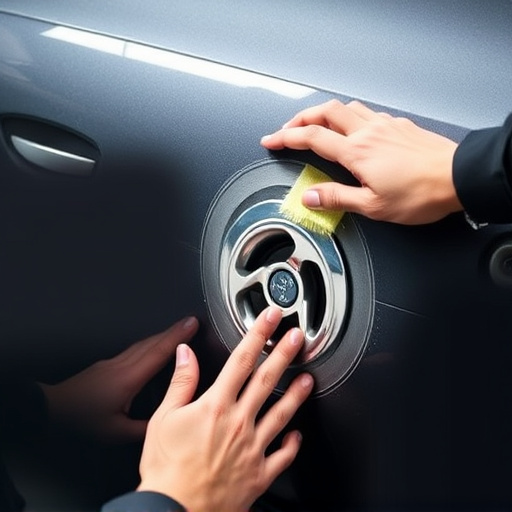The Mercedes Xentry diagnostic system is a powerful tool for modern vehicle repair, especially for Mercedes-Benz models. It facilitates accurate diagnostics, transmission programming, and other maintenance tasks by providing access to real-time data. While adopting Xentry has a learning curve and technical requirements, its benefits in streamlining repairs and enhancing service center efficiency make it an indispensable asset for contemporary vehicle needs.
The Mercedes Xentry diagnostic system is a powerful tool for mechanics, offering in-depth insights into vehicle systems. For transmission programming tasks, it’s an absolute necessity. This guide delves into the intricacies of the Xentry system, providing a step-by-step approach to transmission programming. We explore its benefits and challenges, ensuring professionals can harness its full potential. Understanding and mastering Mercedes Xentry diagnostic is crucial for efficient and accurate vehicle servicing.
- Understanding Mercedes Xentry Diagnostic System
- Transmission Programming: A Step-by-Step Guide
- Benefits and Challenges of Xentry for Mechanics
Understanding Mercedes Xentry Diagnostic System

The Mercedes Xentry diagnostic system is a sophisticated tool that has become an integral part of modern vehicle repair services, particularly for Mercedes-Benz models. It serves as a powerful interface between technicians and the complex electronic systems within Mercedes vehicles. This system enables automotive repair specialists to access real-time data, diagnose issues, and program various components, ensuring optimal performance and reliability.
With its advanced capabilities, Xentry allows for precise troubleshooting of even the most intricate mechanical and electronic problems. It’s not just a diagnostic tool; it facilitates the overall maintenance and customization of Mercedes automobiles. Whether it’s programming a transmission or updating vehicle settings, this technology is revolutionizing auto glass repair and enhancing the efficiency of service centers worldwide.
Transmission Programming: A Step-by-Step Guide

Transmission programming is a critical task for any Mercedes vehicle owner or automotive technician looking to ensure smooth and efficient gear shifting. It involves a series of precise steps that require both technical expertise and a reliable diagnostic tool, making the Mercedes Xentry diagnostic an indispensable asset. The process starts with identifying the specific transmission model and gathering the necessary programming data, which can often be sourced from the vehicle’s onboard computer.
Next, you’ll need to connect the Mercedes Xentry diagnostic scanner to the car’s OBD-II port, typically located under the dashboard or near the steering wheel. This step allows the scanner to communicate with the transmission control unit (TCU), which manages gear shifting and other vital functions. With the correct software and a comprehensive understanding of the vehicle’s systems, you can then proceed to program or reconfigure the transmission settings, ensuring optimal performance and responsiveness under various driving conditions. Just as in other aspects of automotive restoration and maintenance, such as tire services or fender repair, precision and adherence to manufacturer guidelines are paramount for successful transmission programming.
Benefits and Challenges of Xentry for Mechanics

Mercedes Xentry diagnostic tools have revolutionized the way mechanics perform transmission programming tasks, offering numerous benefits for modern workshops. With its advanced capabilities, Xentry enables precise and efficient diagnostics, allowing technicians to quickly identify issues within a vehicle’s complex electronic systems. This is particularly advantageous when dealing with intricate transmission networks, where traditional methods might be time-consuming and less accurate. By providing real-time data and analysis, Xentry empowers mechanics to make informed decisions, enhancing overall repair efficiency and reducing potential car damage repair costs.
However, adopting Mercedes Xentry diagnostic tools also presents certain challenges. Mechanics may face a learning curve as they familiarize themselves with the software’s extensive features and functions. Additionally, ensuring compatible hardware and secure network connections is essential to prevent disruptions during critical repairs, especially when tackling complex tasks like classic car restoration. Despite these considerations, the benefits of Xentry in streamlining transmission programming far outweigh the challenges, making it an invaluable asset for workshops catering to modern vehicle requirements.
The Mercedes Xentry diagnostic system has proven to be an indispensable tool for mechanics, offering a comprehensive solution for transmission programming tasks. By understanding the Xentry system and its step-by-step processes, professionals can efficiently navigate the complex world of Mercedes vehicle repairs. While there are benefits such as enhanced precision and time-saving capabilities, mechanics also face challenges like initial setup complexity. Overall, embracing the Mercedes Xentry diagnostic is a game-changer, revolutionizing how transmission issues are addressed in today’s digital era.














